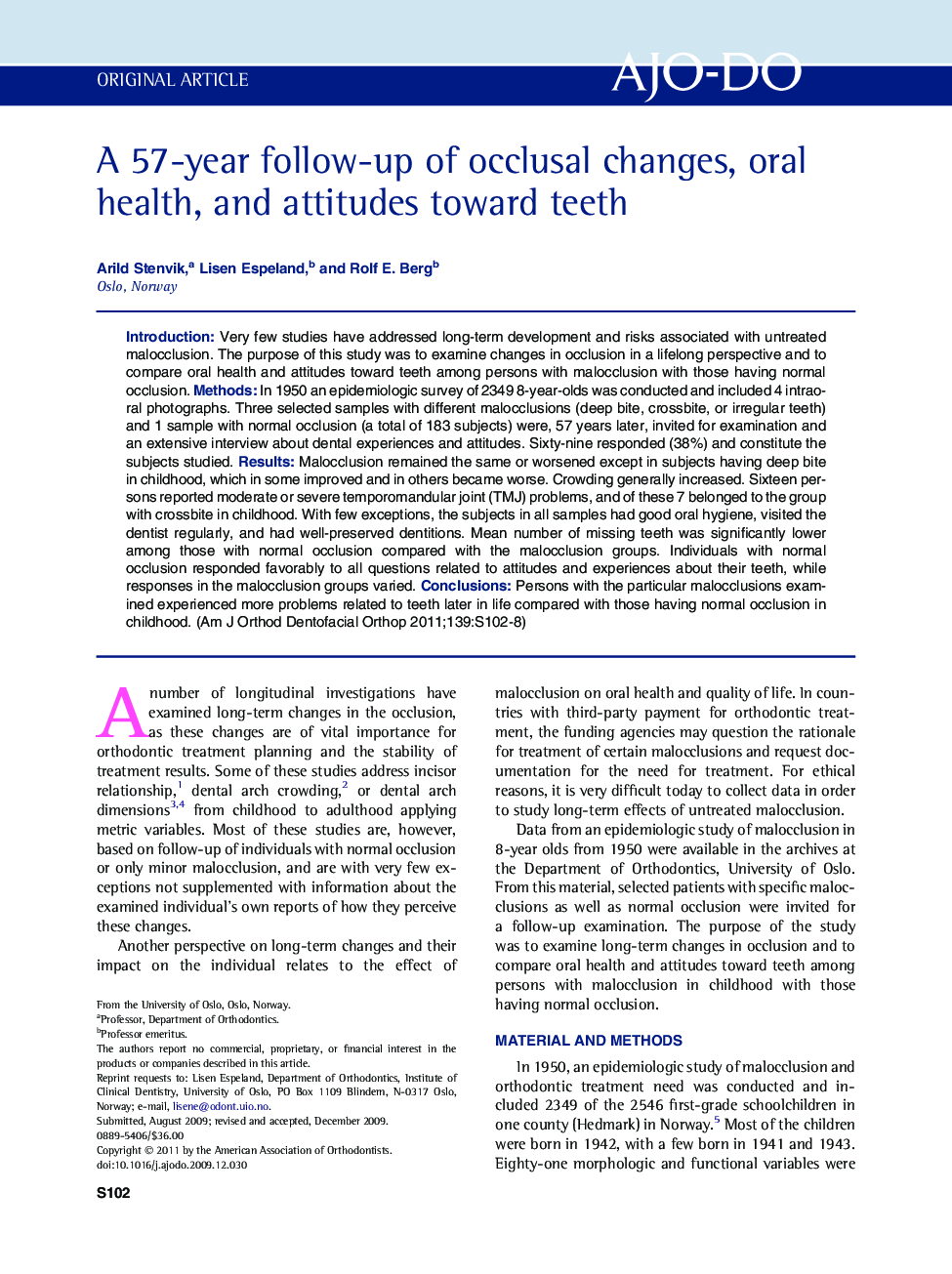| Article ID | Journal | Published Year | Pages | File Type |
|---|---|---|---|---|
| 3118969 | American Journal of Orthodontics and Dentofacial Orthopedics | 2011 | 7 Pages |
IntroductionVery few studies have addressed long-term development and risks associated with untreated malocclusion. The purpose of this study was to examine changes in occlusion in a lifelong perspective and to compare oral health and attitudes toward teeth among persons with malocclusion with those having normal occlusion.MethodsIn 1950 an epidemiologic survey of 2349 8-year-olds was conducted and included 4 intraoral photographs. Three selected samples with different malocclusions (deep bite, crossbite, or irregular teeth) and 1 sample with normal occlusion (a total of 183 subjects) were, 57 years later, invited for examination and an extensive interview about dental experiences and attitudes. Sixty-nine responded (38%) and constitute the subjects studied.ResultsMalocclusion remained the same or worsened except in subjects having deep bite in childhood, which in some improved and in others became worse. Crowding generally increased. Sixteen persons reported moderate or severe temporomandular joint (TMJ) problems, and of these 7 belonged to the group with crossbite in childhood. With few exceptions, the subjects in all samples had good oral hygiene, visited the dentist regularly, and had well-preserved dentitions. Mean number of missing teeth was significantly lower among those with normal occlusion compared with the malocclusion groups. Individuals with normal occlusion responded favorably to all questions related to attitudes and experiences about their teeth, while responses in the malocclusion groups varied.ConclusionsPersons with the particular malocclusions examined experienced more problems related to teeth later in life compared with those having normal occlusion in childhood.
